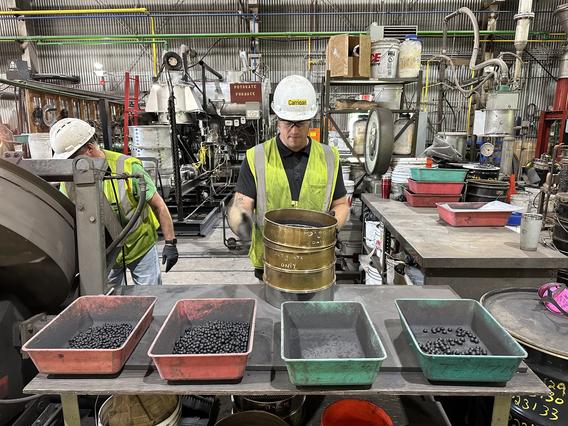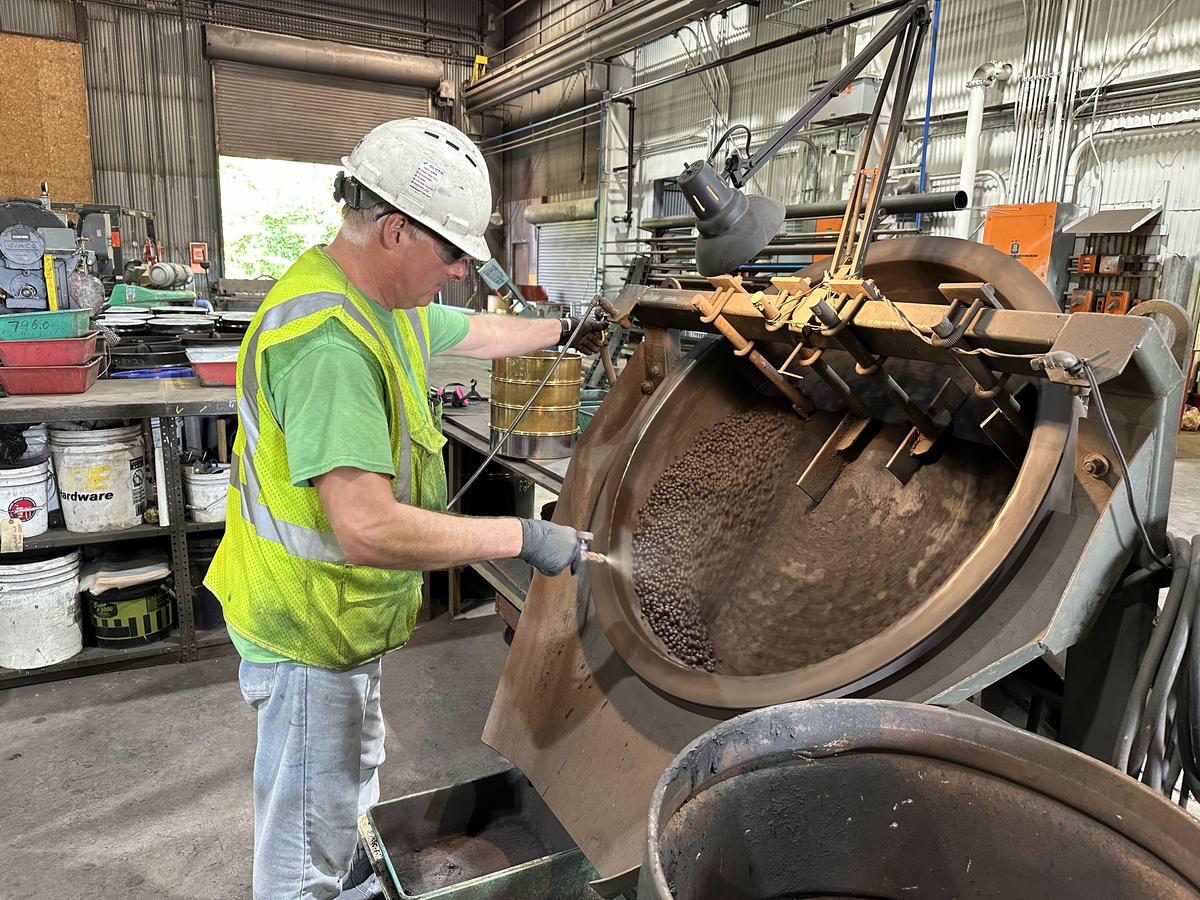Minnesota has an abundance of iron ore mineral resources. The Mesabi Iron Range produces some 40 million tons of taconite pellets annually, providing 75 - 85 percent of the U.S. domestic iron for steel production.
Fossil coal and natural gas provide the energy and the carbon essential for iron and steelmaking. Minnesota’s iron industry has made significant strides to reduce energy consumption, but the global iron and steel industry contributes approximately nine percent of the world’s carbon dioxide emissions.
Discussions around significantly reducing carbon emissions of the iron and steel industries reach from the United Nations to Washington, D.C. to northern Minnesota. An important focus is on transitioning from blast furnace taconite pellets to higher iron content pellets used in electric arc furnaces which emit about half the carbon dioxide in the steelmaking process.
Some 70 percent of the steel in the U.S. is made with electric arc furnaces. NRRI is strategically positioned to assist Minnesota’s iron and steel industry expand its portfolio from making iron oxide pellets for blast furnaces to also making direct reduced iron pellets for the growing electric arc furnace market as blast furnaces phase out.
“Minnesota sits at the source of the iron supply chain,” said NRRI Executive Director Rolf Weberg. “We have a real opportunity to have a global impact on carbon emissions by partnering with industry, the federal government and local communities to demonstrate technologies that can further decarbonize the sector.”
Preparing for Economy of the Future
NRRI research plays a key role in helping U.S. steel companies reduce carbon impacts at the source. Researchers have been working for decades to modify process steps, produce higher value products and transition from blast furnace taconite pellets to electric arc furnace direct reduced pellets.

With a strategic focus on the economy of the future, NRRI has several projects underway funded by private industry, the state of Minnesota and the U.S. Departments of Energy and Defense.
“NRRI is in a unique position, given our location, our expertise and capabilities, and our broad relationships to partner with the Department of Energy in decarbonization efforts,” Weberg said. “We are here to help bridge between good ideas and full demonstration of new technologies to reduce risk and accelerate adoption and investment.”
NRRI has stayed ahead of the “decarbonization conversation” by investing in mineral processing and metallurgical testing capabilities. In 2016, with financial support from the Minnesota Legislature, NRRI initiated a globally unique project to simulate existing and emerging direct reduced iron (DRI) process technologies.
Designing and engineering of NRRI’s “DRI Simulator” project started in 2017 and was fully funded in late 2022 through a grant from the U.S. Department of Energy. It is expected to be operational in 2024. This will be a valuable tool for iron and steel industries in reducing the risk involved in transitioning to the higher grade, direct reduced pellets.
In order to transition to alternative reductants like biocarbon, hydrogen, and ammonia, NRRI added several new metallurgical testing capabilities. This ensures the capacity to conduct all of the industry standard metallurgical tests required to assess iron ore feedstocks and intermediate products like DRI, and even the production of pig iron using alternative materials. Some of the new equipment has been partially funded through legislation championed by late Minnesota State Senator David Tomassoni.
“Recent announcements by United States Steel and MagIron, LLC indicate just how important NRRI’s role has been and will continue to be,” said Kevin Kangas, NRRI Director of Technical Operations. “Existing and new producers of iron oxide pellets are investing in quality products that are more energy efficient from the mine pit to the processing plant to the railcar.”
Real World
MagIron is working to decarbonize the steel industry by supplying low carbon iron units through the restart of Plant 4, near Bovey, Minn. This modern iron ore concentrator, with a potential capacity of three million tons per year, processes waste materials from historical mining operations into high-grade, low impurity iron ore concentrate.
NRRI Metallurgical Engineer Shashi Rao, leads a program to demonstrate the MagIron Plant 4 flowsheet. This effort will process waste materials from historical mining operations near the Mesabi Iron Range into high-grade, low impurity iron ore concentrate, supporting steel industry decarbonization efforts.
“NRRI test results are encouraging regarding the potential to produce direct reduced grade pellet feed from waste resources,” said Rao. “This is significant considering the global focus on decarbonization of the steel industry and the ability to impact the domestic electric arc furnace market.”
U.S. Steel has long made taconite pellets at their Minntac plant in Mountain Iron and Keetac in Keewatin for their blast furnaces. The company recently invested $150 million to transition the Keetac operation to produce DR-grade pellets. NRRI Metallurgical Engineer Brett Spigarelli is the project manager leading NRRI’s team to complete bench and pilot scale demonstrations of their new processing technologies.
“Not only does this provide a domestic source of iron for a lower carbon footprint in steelmaking, it makes the Keetac plant an essential facility serving the growing electric arc furnace steelmaking market in the U.S., adding stability to the Iron Range economy,” said Spigarelli. “It’s a win all around.”
Mapping the path forward, NRRI will continue to work on building a future that includes making high value iron and steel products sustainably in Minnesota.
“There are many factors to consider when deciding where to make iron products, but longer term the laws of physics and thermodynamics are on our side,” Kangas added. “It is more efficient to limit material handling and keep iron heated through the supply chain rather than ship cold pellets out of the state to be stripped of oxygen and reheated.”
PHOTO TOP: Technician Steve Zaitz prepares green balls for testing.
